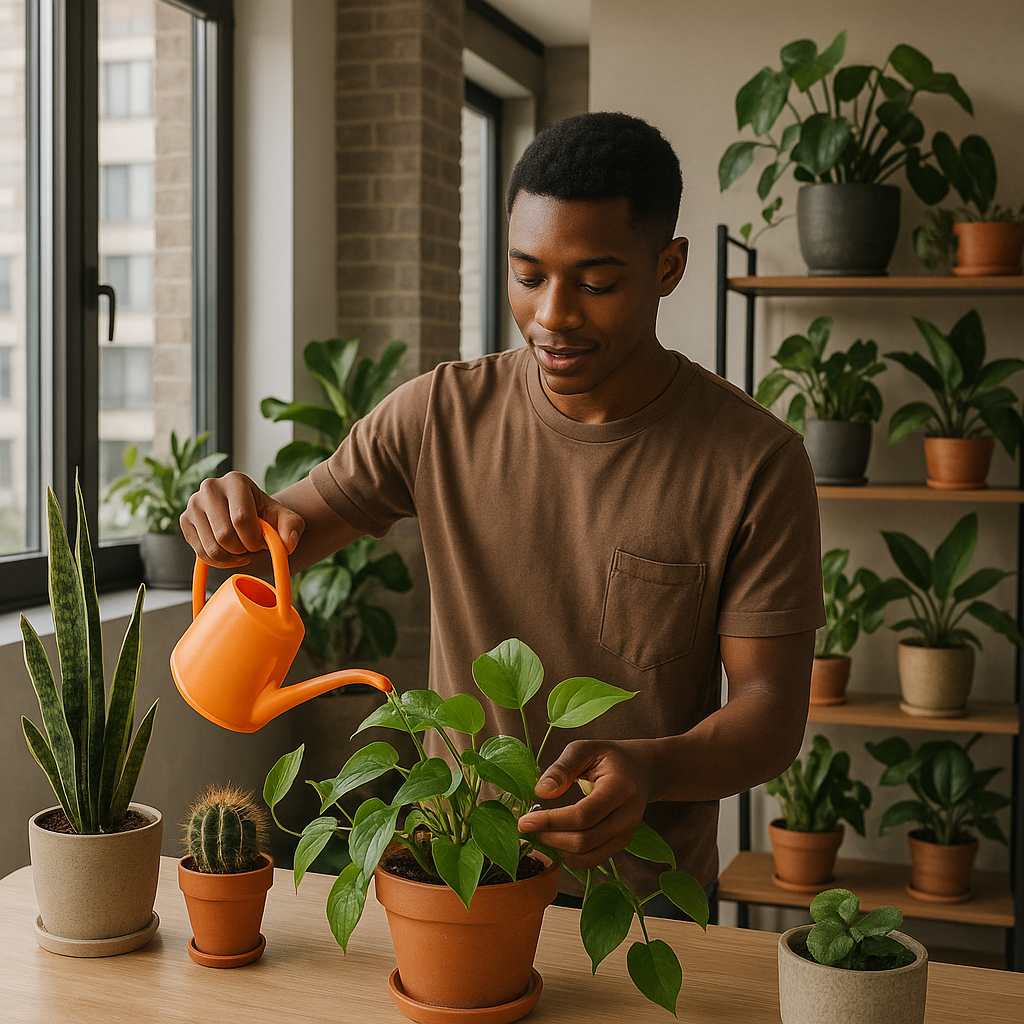Apartment living offers a cozy, efficient way to enjoy city life, but it often comes with limited space, inconsistent light, and busy schedules—all factors that can make plant care feel intimidating. However, the secret to a thriving indoor garden isn’t perfection—it’s consistency. By creating a realistic, flexible routine, you can enjoy lush, healthy plants while balancing everything else in your life.
In this comprehensive guide, you’ll learn how to build a plant care routine that fits seamlessly into your apartment lifestyle—whether you’re a beginner or someone trying to regain control of your growing plant collection.
Why Routines Make Plant Care Easier
Without structure, it’s easy to either neglect or overcompensate for your plants. A thoughtful routine offers multiple benefits:
- Prevents Over- or Underwatering: Watering becomes consistent and appropriate for each plant’s needs.
- Keeps Pests in Check: Regular inspections catch problems early.
- Encourages Healthy Growth: Consistent care leads to stronger, more resilient plants.
- Reduces Stress: Plant care becomes a predictable, relaxing part of your week.
- Fits Your Lifestyle: A tailored system makes it easy to care for plants even with a busy schedule.
Step 1: Know Your Plants (Categorize by Need)
Every plant species has different care requirements, and knowing these is the foundation of your routine.
Key Categories to Define:
| Need Type | Questions to Ask | Examples |
|---|---|---|
| Water | Does it need watering daily, weekly, or biweekly? | Ferns (frequent), Snake Plants (infrequent) |
| Light | Does it thrive in low, medium, or bright light? | ZZ Plant (low), Aloe Vera (bright) |
| Humidity | Does it prefer dry air or high humidity? | Calatheas (humid), Cactus (dry) |
Pro Tip: Label each pot with its basic care needs using plant tags or stickers to simplify tracking.
Step 2: Build a Weekly Plant Care Schedule
A simple weekly system helps you stay consistent while breaking tasks into small, manageable chunks. You can use:
- Physical planner
- Smartphone calendar
- Habit-tracking app
- Wall chart or whiteboard
Sample Weekly Routine:
| Day | Task |
|---|---|
| Monday | Check soil moisture; mist tropical plants |
| Wednesday | Rotate plants for even light exposure |
| Friday | Water moderate-need plants; wipe dust from leaves |
| Sunday | Deep watering for thirsty plants; pest inspection |
Step 3: Use Visual Reminders
Keeping plants in visible, high-traffic areas serves as a natural reminder to check on them:
- Living Room: Snake Plant, Pothos, Rubber Plant.
- Bedroom: Peace Lily, Snake Plant.
- Kitchen: Aloe Vera, Herbs, Spider Plant.
- Bathroom: Ferns, Calatheas, Orchids.
Out of sight = out of mind. Visible placement increases the likelihood that you’ll stick to your routine.
Step 4: Set Up a Plant Care Station
Having your tools easily accessible makes each task feel quicker and easier.
Essential Plant Care Tools:
- Watering Can: Choose one with a narrow spout for precision.
- Spray Bottle: For misting humidity-loving plants.
- Moisture Meter: Takes the guesswork out of soil moisture.
- Pruning Scissors: Keep plants tidy and healthy.
- Soft Cloth: Gently wipe dust from leaves to support photosynthesis.
- Fertilizer: Use a mild liquid fertilizer appropriate for your plants.
- Plastic Sheet (Optional): Useful for repotting indoors.
Store these tools in a basket, drawer, or portable tray near your plants.
Step 5: Track Progress & Adjust
No two plants are identical—even within the same species. Tracking helps you learn what works best for your unique collection.
What to Track:
- Watering Dates: Helps prevent overwatering.
- Fertilizer Application: Record when you feed your plants.
- Repotting Dates: Monitor when a plant may need more space.
- Leaf Changes: Note any yellowing, spotting, or growth changes.
- Pest Sightings: Early identification leads to faster resolution.
You can track your notes digitally (plant care apps) or with a physical notebook.
Step 6: Seasonal Adjustments
Plants’ needs shift as seasons change, especially indoors:
| Season | Adjustment |
|---|---|
| Winter | Less water; more humidity; supplemental light. |
| Spring | Resume fertilizing; begin repotting. |
| Summer | Increase watering for faster growth. |
| Fall | Prepare for dormancy; reduce feeding. |
Troubleshooting Common Plant Routine Challenges
| Issue | Likely Cause | Solution |
|---|---|---|
| Wilting Leaves | Under- or overwatering | Check soil moisture consistency |
| Brown Leaf Tips | Low humidity or salts | Increase humidity, flush soil |
| Yellowing Leaves | Nutrient imbalance or light issues | Adjust fertilization, reposition |
| Pest Infestation | Infrequent inspections | Add weekly pest checks to routine |
Bonus Tips for Sustainable Apartment Plant Care
- Start Small: Begin with a few easy plants like Pothos, Snake Plant, or Peace Lily.
- Batch Tasks: Water, prune, and inspect multiple plants at once.
- Group by Care Needs: Cluster humidity-loving plants together.
- Set Alarms: Use phone reminders to stay consistent.
- Celebrate Progress: Take before/after photos to track your plant’s growth over time.
Final Thoughts
The key to successful apartment plant care isn’t about having endless free time or advanced gardening knowledge—it’s about creating a manageable, repeatable system. With a clear routine tailored to your schedule, your plants will flourish, your confidence will grow, and your apartment will transform into a vibrant, green oasis.
Consistency beats perfection. Start small, stay steady, and let your apartment garden thrive.
